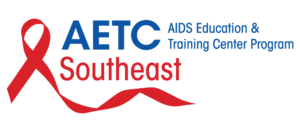People-First Language
Segment Three of Cultural Humility & Reducing Stigma and Discrimination Resources
People-first describes a way of speaking that tries to avoid perceived and subconscious dehumanization when discussing other people. This can be applied to any group that is defined by a trait or condition rather than being defined first and foremost as a human being.
When it comes to illness and health, putting the person before the diagnosis describes what the person “has” rather than who they are. Using a sentence structure where the person comes first allows for this. For example, saying “people with disabilities” is more humanizing than saying “disabled people” or “the disabled.”
People First Language – Rather than using labels to define individuals with a health issue, it is more appropriate to use terminology, which describes individuals as being diagnosed with an illness or disorder.
– Dr. Vickie Lynn, PhD, MSW, MPH
Step 1
Begin with a brief warm-up exercise: Ask participants to close their eyes. Ask aloud: “Imagine a woman without a home, who has HIV.” Pause. Ask participants: “Now, imagine an HIV-infected homeless woman.” Invite participants to share their reactions and ask what differences there may have been between the two mental images.
Step 4
Review people-first language activity key with group.
Resources
References
- Corrigan PW, River LP, Lundin R, Wasowski K, Campion J, Mathisen J, et al. (2000). Stigmatizing attributions about mental illness. Journal of Community Psychology 2000;28(1):91–102.
- Corrigan, P. W. (2007). How clinical diagnosis might exacerbate the stigma of mental illness. Social Work, 52(1), 31-39.
- Denver Principles. (1983). Advisory Committee of People with HIV/AIDS. Retrieved from https://www.nlm.nih.gov/survivingandthriving/education/documents/OB2216-DenverPrinciples.pdf
- Dilmitis S, Edwards O, Hull B et al (2012). Why do we keep talking about the responsible and responsive use of language? Language matters. Journal of the International AIDS Society, 15(Suppl 2)
- Dilmitis, S., Edwards, O., Hull, B., Margolese, S., Mason, N., Namiba, A., … & Welbourn, A. (2012). Language, identity and HIV: why do we keep talking about the responsible and responsive use of language? Language matters. Journal of the International AIDS Society, 15 (Suppl 2).
- Higgins, C., & Norton, B. (Eds.). (2009). Language and HIV/Aids. Multilingual Matters
- Jensen, M. E., Pease, E. A., Lambert, K., Hickman, D. R., Robinson, O., McCoy, K. T., … & Ramirez, J. (2013). Championing person-first language: a call to psychiatric mental health nurses. Journal of the American Psychiatric Nurses Association, 19(3), 146-151.
- Kaiser Family Foundation. Reporting Manual on HIV/AIDS https://kff.org/hivaids/reporting-manual-on-hivaids-updated-aids-organizations/
- Kalichman, S. C., Simbayi, L. C., Cloete, A., Mthembu, P. P., Mkhonta, R. N., & Ginindza, T. (2009). Measuring AIDS stigmas in people living with HIV/AIDS: the Internalized AIDS-Related Stigma Scale. AIDS Care, 21(1), 87-93..
- Kalichman, S.C. & Simbayi, L.C. (2003). HIV testing attitudes, AIDS stigma, and voluntary HIV counselling and testing in a black township in Cape Town, South Africa. Sexually Transmitted Infections. 79:442-447.
HIV Stigma and People First Language
Vlynn 2019 - Kelly, J. F., Saitz, R., & Wakeman, S. (2016). Language, substance use disorders, and policy: The need to reach consensus on an “addiction-ary”. Alcoholism Treatment Quarterly, 34(1), 116-123.
- King, M. (2010). How the Denver Principles Changed AIDS (and Health Care) Forever (My Fabulous Disease). Retrieved from http://marksking.com/my-fabulous-disease/how-the-denver-principles-changed-aids-and-health-care-forever/
- Leap, W. L. (1991). Aids, linguistics, and the study of non‐neutral discourse. Journal of Sex Research, 28(2), 275-287.
- Lutfey, K.E. and Wishner, W.J. (1999) Beyond ‘compliance’ is ‘adherence’. Improving the prospect of diabetes care. Diabetes Care 22: 635_639.
- Lynn, V. (2014). Language and HIV: “People First”. Well Project. Retrieved from http://www.thewellproject.org/a-girl-like-me/aglm-blogs/language-and-hiv-people-first .
- Lynn, V. A. (2017). Language and HIV communication. HIV/AIDS (Auckland, N.Z.), 9, 183–185. https://doi.org/10.2147/HIV.S148193
- Lynn, V., Watson, C. Giwa-Onaiwu, M., Ray, V., Galfagher, B., and Wojciechowicz, V., (2016). HIV #LanguageMatters: Addressing Stigma by Using Preferred Language (HIVE). Retrieved from https://www.hiveonline.org/language-matters/
- Lynn, V., Wojciechowicz, V.2, & Watson, C. (2016). HIV #LanguageMatters: using preferred language to address stigma. USF HIV Research Day. Spring 2016.
- Watson, S., Namiba, A., & Lynn, V. (2019). The language of HIV: a guide for nurses. NHIVNA Best Practice. 19(2): BP1-BP4
- Wojciechowicz, V., Lynn., V. (2015). HIV and Language. Positive Women’s Conference. Positive Living Conference. Ft. Walton Beach, Florida.
